7789-41-5
| 中文名 | 溴化钙 |
|---|---|
| 英文名 | calcium dibromide |
| 英文别名 |
MFCD00010902
calcium bromide EINECS 232-164-6 Calcium bromide, ultra dry |
| 密度 | 3.353 g/mL at 25 °C(lit.) |
|---|---|
| 沸点 | 806-812°C |
| 熔点 | 730°C |
| 分子式 | Br2Ca |
| 分子量 | 199.88600 |
| 闪点 | 806-812°C |
| 精确质量 | 197.79900 |
| 外观性状 | 白色粉末 |
| 储存条件 | 1.贮存在阴凉、干燥处,应密封避光保存。 2.运输时要防雨淋和日光曝晒,装卸时要轻拿轻放,防止包装破损。 |
| 稳定性 | 如果遵照规格使用和储存则不会分解 避免接触水分/潮湿.受高热则溢出溴而成氧化钙。极易溶于水,水溶液显中性;溶于乙醇、丙酮和酸;微溶于甲醇、液氨;不溶于乙醚或氯仿。可与碱金属卤化物形成复盐。有很强的吸湿性。易溶于水,在100g水中的溶解度为142g(20℃),微溶于乙醇和丙酮。 |
| 水溶解性 | 不同温度(℃)时每100毫升水中的溶解克数: 125g/0℃;132g/10℃;143g/20℃;213g/40℃ 278g/60℃;295g/80℃;312g/100℃ |
| 计算化学 | 1.疏水参数计算参考值(XlogP):无 2.氢键供体数量:0 3.氢键受体数量:2 4.可旋转化学键数量:0 5.互变异构体数量:无 6.拓扑分子极性表面积0 7.重原子数量:3 8.表面电荷:0 9.复杂度:0 10.同位素原子数量:0 11.确定原子立构中心数量:0 12.不确定原子立构中心数量:0 13.确定化学键立构中心数量:0 14.不确定化学键立构中心数量:0 15.共价键单元数量:3 |
| 更多 | 1. 性状:白色块状物。无臭,味咸而苦。易潮解。在空气中久置变黄。 2. 密度(g/mL 25ºC):3.25 3. 相对蒸汽密度(g/mL,空气=1):未确定 4. 熔点(ºC):730 5. 沸点(ºC,常压):806-812 6. 沸点(ºC,5.2kPa):未确定 7. 折射率(n20/D):未确定 8. 闪点(ºC,):806-812 9. 比旋光度(º):未确定 10. 自燃点或引燃温度(ºC):未确定 11. 蒸气压(kPa,25ºC):未确定 12. 饱和蒸气压(kPa,60ºC):未确定 13. 燃烧热(KJ/mol):未确定 14. 临界温度(ºC):未确定 15. 临界压力(KPa):未确定 16. 油水(辛醇/水)分配系数的对数值(25℃):未确定 17. 爆炸上限(%,V/V):未确定 18. 爆炸下限(%,V/V):未确定 19. 溶解性(mg/mL):溶于乙醇、丙酮和酸;微溶于甲醇、液氨;不溶于乙醚或氯仿 |
Synonym:Calcium dibromide dihydrate Section 2 - COMPOSITION, INFORMATION ON INGREDIENTS
Risk Phrases: None Listed. Section 3 - HAZARDS IDENTIFICATION EMERGENCY OVERVIEW
The toxicological properties of this material have not been fully investigated.Hygroscopic (absorbs moisture from the air). Potential Health Effects Eye: May cause eye irritation. The toxicological properties of this material have not been fully investigated. Skin: May cause skin irritation. The toxicological properties of this material have not been fully investigated. Ingestion: Ingestion of large amounts may cause gastrointestinal irritation. The toxicological properties of this substance have not been fully investigated. Inhalation: May cause respiratory tract irritation. The toxicological properties of this substance have not been fully investigated. Chronic: No information found. Section 4 - FIRST AID MEASURES Eyes: Flush eyes with plenty of water for at least 15 minutes, occasionally lifting the upper and lower eyelids. Get medical aid. Skin: Flush skin with plenty of water for at least 15 minutes while removing contaminated clothing and shoes. Get medical aid if irritation develops or persists. Wash clothing before reuse. Ingestion: Do not induce vomiting. If victim is conscious and alert, give 2-4 cupfuls of milk or water. Never give anything by mouth to an unconscious person. Get medical aid. Inhalation: Remove from exposure and move to fresh air immediately. If not breathing, give artificial respiration. If breathing is difficult, give oxygen. Get medical aid if cough or other symptoms appear. Notes to Physician: Section 5 - FIRE FIGHTING MEASURES General Information: As in any fire, wear a self-contained breathing apparatus in pressure-demand, MSHA/NIOSH (approved or equivalent), and full protective gear. During a fire, irritating and highly toxic gases may be generated by thermal decomposition or combustion. Extinguishing Media: Use water spray, dry chemical, carbon dioxide, or appropriate foam. Section 6 - ACCIDENTAL RELEASE MEASURES General Information: Use proper personal protective equipment as indicated in Section 8. Spills/Leaks: Vacuum or sweep up material and place into a suitable disposal container. Clean up spills immediately, observing precautions in the Protective Equipment section. Avoid generating dusty conditions. Provide ventilation. Section 7 - HANDLING and STORAGE Handling: Wash thoroughly after handling. Wash hands before eating. Use with adequate ventilation. Minimize dust generation and accumulation. Avoid contact with eyes, skin, and clothing. Keep container tightly closed. Avoid ingestion and inhalation. Storage: Store in a cool, dry, well-ventilated area away from incompatible substances. Store protected from moisture. Section 8 - EXPOSURE CONTROLS, PERSONAL PROTECTION Engineering Controls: Facilities storing or utilizing this material should be equipped with an eyewash facility and a safety shower. Use adequate ventilation to keep airborne concentrations low. Exposure Limits CAS# 7789-41-5: CAS# 22208-73-7: Personal Protective Equipment Eyes: Wear appropriate protective eyeglasses or chemical safety goggles as described by OSHA's eye and face protection regulations in 29 CFR 1910.133 or European Standard EN166. Skin: Wear appropriate protective gloves to prevent skin exposure. Clothing: Wear appropriate protective clothing to prevent skin exposure. Respirators: Follow the OSHA respirator regulations found in 29 CFR 1910.134 or European Standard EN 149. Use a NIOSH/MSHA or European Standard EN 149 approved respirator if exposure limits are exceeded or if irritation or other symptoms are experienced. Section 9 - PHYSICAL AND CHEMICAL PROPERTIES Physical State: Solid Color: white to off-white Odor: Odorless. pH: Not available. Vapor Pressure: Not available. Viscosity: Not available. Boiling Point: Not available. Freezing/Melting Point: Not available. Autoignition Temperature: Not available. Flash Point: Not applicable. Explosion Limits, lower: Not available. Explosion Limits, upper: Not available. Decomposition Temperature: Solubility in water: soluble in alcohol and acetone Specific Gravity/Density: Molecular Formula: Br2Ca.2H2O Molecular Weight: 235.93 Section 10 - STABILITY AND REACTIVITY Chemical Stability: Stable under normal temperatures and pressures. Conditions to Avoid: Dust generation, excess heat, exposure to moist air or water. Incompatibilities with Other Materials: Sulfuric acid, isocyanates. Hazardous Decomposition Products: Irritating and toxic fumes and gases, hydrogen bromide. Hazardous Polymerization: Will not occur. Section 11 - TOXICOLOGICAL INFORMATION RTECS#: CAS# 7789-41-5: EV9328000 CAS# 22208-73-7 unlisted. LD50/LC50: CAS# 7789-41-5: Oral, rat: LD50 = 4100 mg/kg. CAS# 22208-73-7. Carcinogenicity: Calcium bromide (CaBr2) - Not listed by ACGIH, IARC, or NTP. Calcium bromide dihydrate - Not listed by ACGIH, IARC, or NTP. Other: See actual entry in RTECS for complete information. Section 12 - ECOLOGICAL INFORMATION Section 13 - DISPOSAL CONSIDERATIONS Dispose of in a manner consistent with federal, state, and local regulations. Section 14 - TRANSPORT INFORMATION IATA Shipping Name: Not regulated. Hazard Class: UN Number: Packing Group: IMO Shipping Name: Not regulated. Hazard Class: UN Number: Packing Group: RID/ADR Shipping Name: Not regulated. Hazard Class: UN Number: Packing group: Section 15 - REGULATORY INFORMATION European/International Regulations European Labeling in Accordance with EC Directives Hazard Symbols: Not available. Risk Phrases: Safety Phrases: S 24/25 Avoid contact with skin and eyes. S 28A After contact with skin, wash immediately with plenty of water. S 37 Wear suitable gloves. S 45 In case of accident or if you feel unwell, seek medical advice immediately (show the label where possible). WGK (Water Danger/Protection) CAS# 7789-41-5: 1 CAS# 22208-73-7: No information available. Canada CAS# 7789-41-5 is listed on Canada's DSL List. CAS# 7789-41-5 is not listed on Canada's Ingredient Disclosure List. CAS# 22208-73-7 is not listed on Canada's Ingredient Disclosure List. US FEDERAL TSCA CAS# 7789-41-5 is listed on the TSCA inventory. CAS# 22208-73-7 is not listed on the TSCA inventory. It is for research and development use only. SECTION 16 - ADDITIONAL INFORMATION N/A |
|
生态学数据: 对水是稍微危害的,若无政府许可,勿将材料排入周围环境 CHEMICAL IDENTIFICATION
HEALTH HAZARD DATAACUTE TOXICITY DATA
MUTATION DATA
|
| 符号 |

GHS05 |
|---|---|
| 信号词 | Danger |
| 危害声明 | H318 |
| 警示性声明 | P280-P305 + P351 + P338 |
| 危害码 (欧洲) | Xi:Irritant |
| 风险声明 (欧洲) | R38 |
| 安全声明 (欧洲) | S22-S24/25 |
| 危险品运输编码 | NONH for all modes of transport |
| WGK德国 | 2 |
| RTECS号 | EV9328000 |
| 海关编码 | 2827590000 |
| 上游产品 7 | |
|---|---|
| 下游产品 5 | |
| 海关编码 | 2827590000 |
|---|




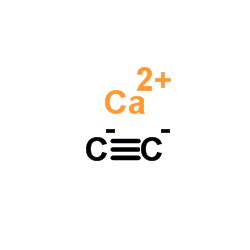




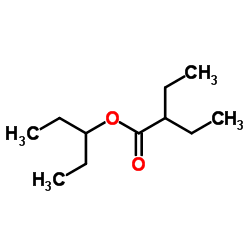
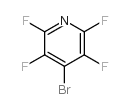
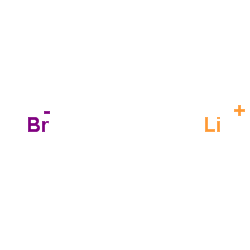
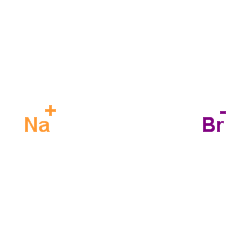



 即有CO2放出并形成溴化钙酸溶液,滤去不溶性杂质,滤液在水浴上加热浓缩,至液面形成一层结晶薄膜。静置,冷却至室温,即有六水合溴化钙结晶析出,吸滤,用滤纸吸干结晶。然后加热六水合溴化钙至其熔点(382℃)附近脱水,再提高温度至50~60℃,最后升温至400℃,同时通入溴化氢和氢气的混合干燥气体,可以得到无水溴化钙。
即有CO2放出并形成溴化钙酸溶液,滤去不溶性杂质,滤液在水浴上加热浓缩,至液面形成一层结晶薄膜。静置,冷却至室温,即有六水合溴化钙结晶析出,吸滤,用滤纸吸干结晶。然后加热六水合溴化钙至其熔点(382℃)附近脱水,再提高温度至50~60℃,最后升温至400℃,同时通入溴化氢和氢气的混合干燥气体,可以得到无水溴化钙。